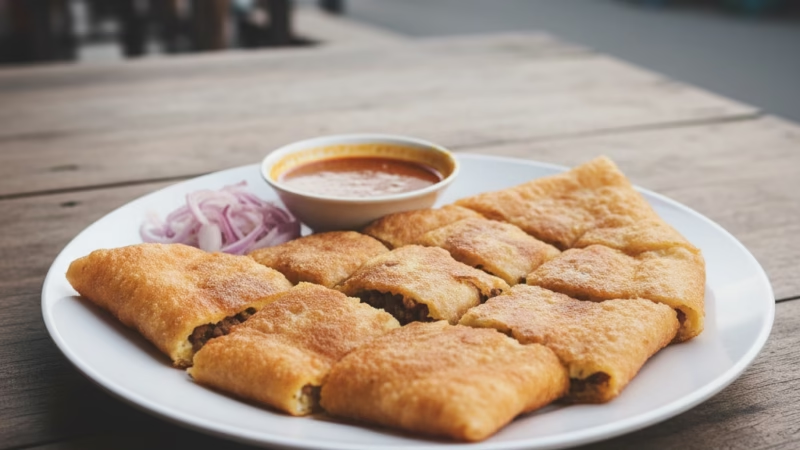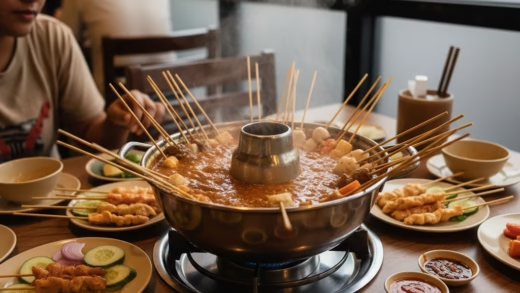Murtabak

Malaysian Food
Murtabak
Origin
Arabian Peninsula; popularized in Southeast Asia (Malaysia, Singapore, Indonesia)
Category
Street food / Savory stuffed pancake
Appearance
Golden-brown, square or rectangular pancake, often glistening with oil; served with curry or pickles
Ingredients
- Dough: Flour, water, egg, ghee/oil, salt
- Filling: Minced meat (chicken, beef, or mutton), onions, garlic, spices (cumin, coriander, turmeric), egg, sometimes vegetables
Preparation
- Knead dough and let rest.
- Sauté meat, onions, and spices for filling.
- Roll dough thin, place filling, fold into square.
- Pan-fry until golden and crispy.
Equipment
Rolling pin, frying pan or griddle, mixing bowls
Variations
- Vegetarian (egg and vegetables)
- Cheese Murtabak
- Sweet versions (banana, chocolate, condensed milk)
Taste
Savory and mildly spiced; sweet variations are sugary and rich
Texture
Crispy exterior with soft, flavorful filling
Aroma
Fragrant with spices, fried dough, and cooked meat
Sound
Sizzling while frying; light crunch when bitten
Cultural Significance
Popular street food and festive dish; commonly consumed during Ramadan or as a snack
Symbolism
Blends Arab culinary traditions with Southeast Asian flavors
Regional Cuisine
Malaysia, Singapore, Indonesia, Brunei, Southern Thailand
Social Context
Available from street vendors, night markets; shared among friends and family
Nutritional Information
High in calories; contains protein, carbs, and fats
Health Benefits
Provides energy and protein; moderation recommended due to frying
Dietary Restrictions
Not suitable for vegetarians unless meat-free; ensure halal meat if required
Allergens
Gluten, eggs, dairy (ghee), sometimes nuts in sweet versions
Cost
Affordable street food (~USD 1–5 per piece)
Production
Prepared fresh by vendors or home cooks; frozen pre-made versions also exist
Sustainability
Depends on meat sourcing; vegetarian options are more sustainable
Availability
Widely available in night markets, hawker centers, and Southeast Asian restaurants
History
Originated from Yemen and India; adapted in Southeast Asia with local spices and ingredients
Anecdotes
A favorite late-night snack during Ramadan in Malaysia and Singapore; often eaten with curry sauce
How to Prepare
- Make and rest dough.
- Cook filling with spices.
- Roll out dough, add filling, fold, and fry.
- Serve with curry or pickles.
FAQ
Q: Can Murtabak be sweet?
A: Yes, sweet versions with chocolate, banana, or condensed milk are popular.
Q: Is Murtabak the same across Southeast Asia?
A: No; flavors and spice levels vary by country.





Comments are closed.